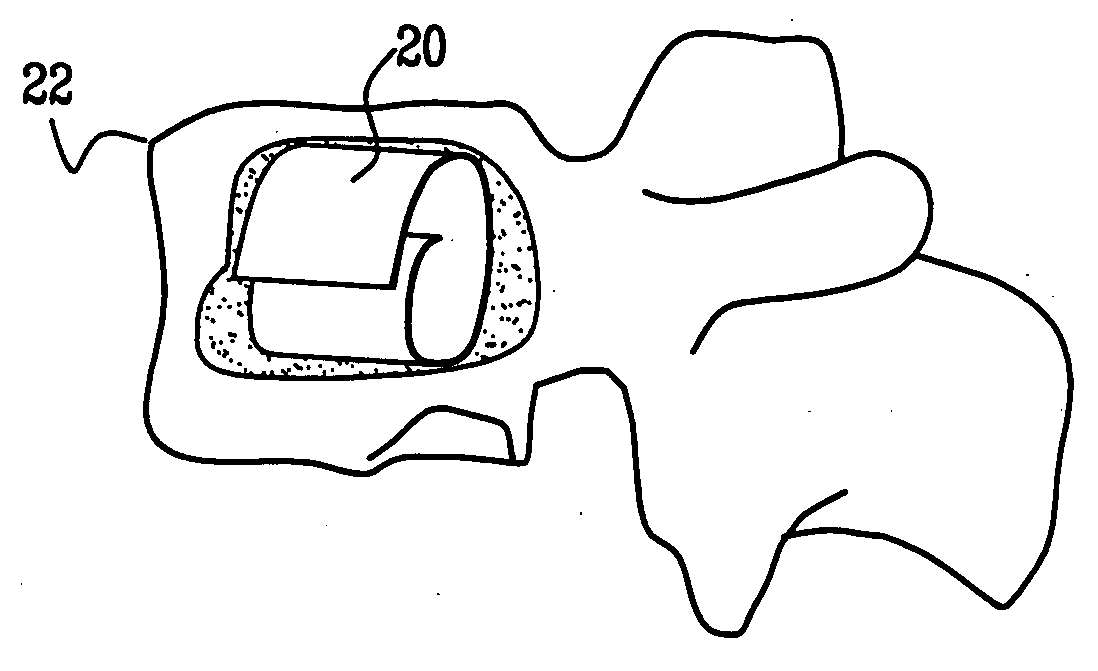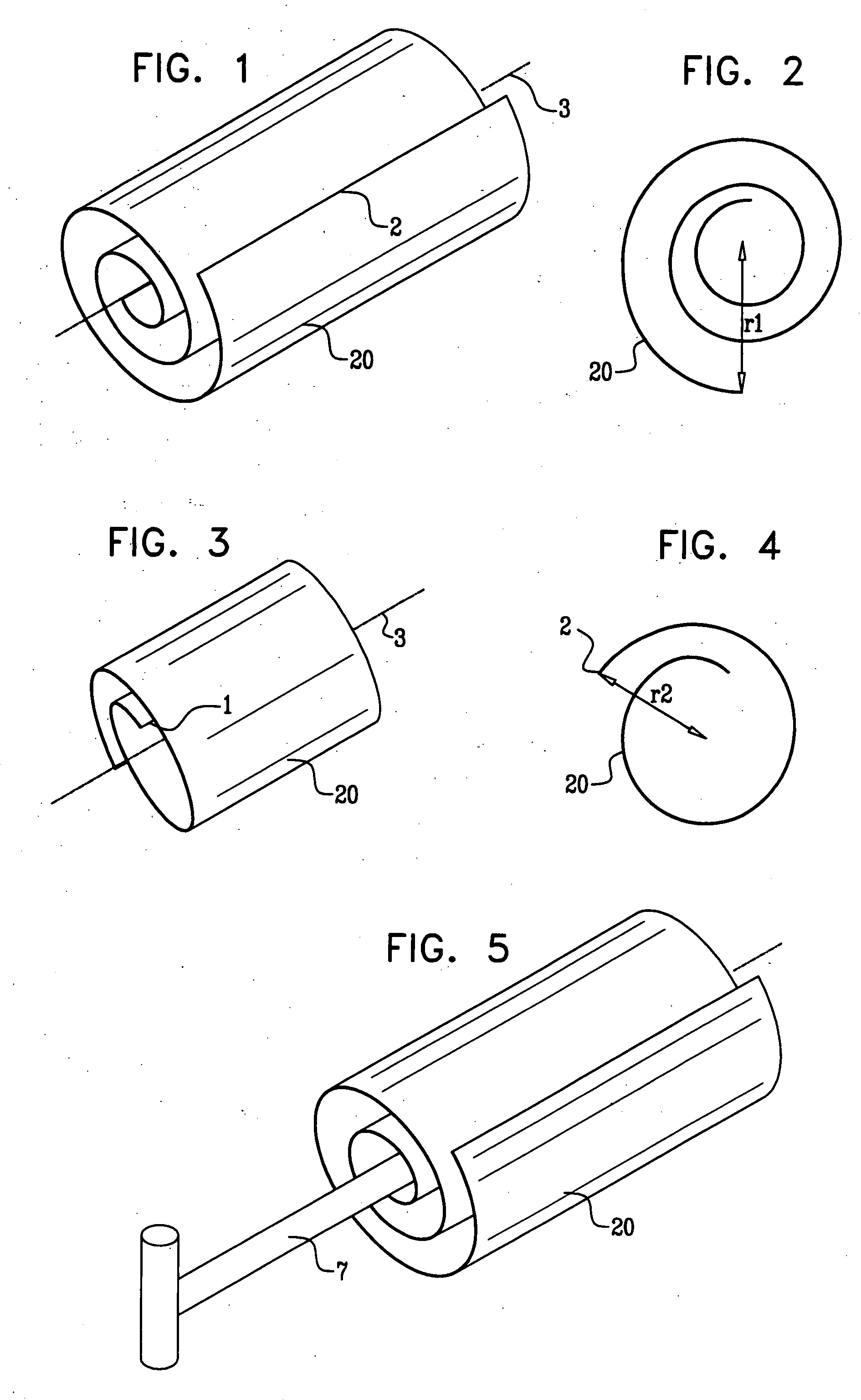Device and method for treating compression fractures
a compression fracture and device technology, applied in the field of implantable medical devices, can solve the problems of pain, spinal instability, paralysis, and current treatment of vertebral compression fractures with respect to fractures of cancellous bone, and achieve the effect of reducing a first location of fracture and a second location of fractur
- Summary
- Abstract
- Description
- Claims
- Application Information
AI Technical Summary
Benefits of technology
Problems solved by technology
Method used
Image
Examples
Embodiment Construction
[0046]Referring to the accompanying drawings wherein like reference numerals refer to the same or similar elements, FIGS. 1 and 2 are schematic illustrations of a vertebral body implant 20 in a compressed state thereof, in accordance with an embodiment of the present invention, FIG. 2 being a cross-sectional view of the implant shown in FIG. 1. A distance r1 between an outer edge 2 and a longitudinal axis 3 of the implant is typically between about 2 mm and about 5 mm, for example about 2.5 mm. Prior to being rolled into the shape shown in FIG. 1, the dimensions of the implant are typically between about 0.1 mm and about 0.5 mm thick (e.g., about 0.2 mm), between about 10 mm and 30 mm wide (e.g., about 20 mm), and between about 50 mm and about 150 mm long (e.g., about 90 mm).
[0047]In general, the size of implant 20 is selected based on the patient's physiology. The implant 20 typically comprises a strong, flexible, biocompatible material. In one embodiment, the implant 20 comprises ...
PUM
 Login to View More
Login to View More Abstract
Description
Claims
Application Information
 Login to View More
Login to View More - R&D
- Intellectual Property
- Life Sciences
- Materials
- Tech Scout
- Unparalleled Data Quality
- Higher Quality Content
- 60% Fewer Hallucinations
Browse by: Latest US Patents, China's latest patents, Technical Efficacy Thesaurus, Application Domain, Technology Topic, Popular Technical Reports.
© 2025 PatSnap. All rights reserved.Legal|Privacy policy|Modern Slavery Act Transparency Statement|Sitemap|About US| Contact US: help@patsnap.com



